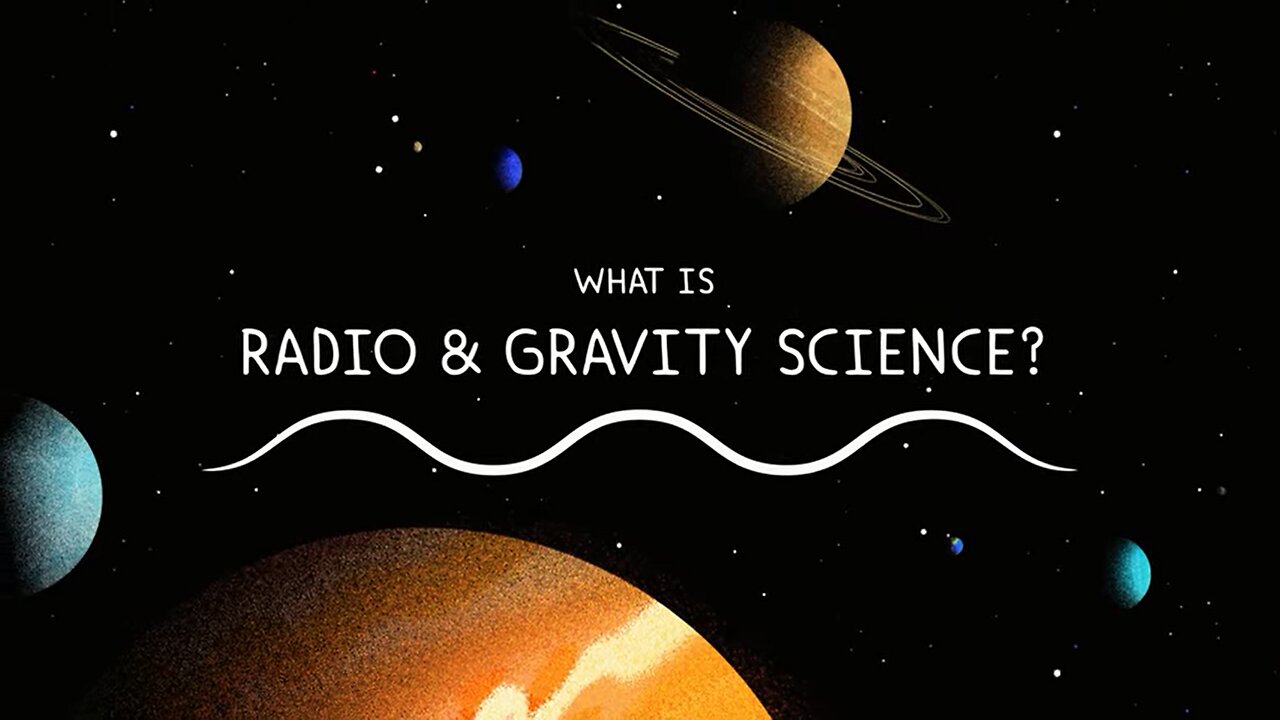Premium Only Content

How NASA Uses Gravity and Radio Waves to Study Planets and Moons
The Deep Space Network, NASA’s international collection of giant radio antennas used to communicate with spacecraft at the Moon and beyond, helps scientists and engineers use gravity and radio science experiments to learn more about our planetary neighborhood.
After reaching a spacecraft reaches its destination, it uses radio antennas to communicate with the Deep Space Network, which in turn transmits radio signals back to the spacecraft. Every spacecraft travels in a predetermined path emitting radio signals as it orbits around its target. Scientists and engineers can infer the spacecraft's location and how fast it's going by measuring changes in the spacecraft's radio signal frequency. This is made possible by the Doppler effect, the same phenomenon that causes a siren to sound different as it travels towards and away from you.
The Doppler phenomenon is observed here when the spacecraft and the Deep Space Network antenna move in relation to each other. Differences between the frequency of radio signals sent by the spacecraft as it orbits and signals received on Earth give us details about the gravitational field of a planetary body. For example, if the gravity is slightly stronger, the spacecraft will accelerate slightly more. If gravity is slightly weaker, the spacecraft will accelerate slightly less. By developing a model of the planetary body's gravitational field, which can be mapped as a gravitational shape, scientists and researchers can deduce information about its internal structure.
The Deep Space Network was developed by and is managed by NASA’s Jet Propulsion Laboratory (JPL) in Southern California. The antennas of the Deep Space Network are the indispensable link to robotic explorers venturing beyond Earth. They provide the crucial connection for commanding our spacecraft and receiving never-before-seen images and scientific information on Earth, propelling our understanding of the universe, our solar system and ultimately, our place within it.
JPL manages the Deep Space Network for the Space Communications and Navigation (SCaN) Program, based at NASA Headquarters within the Space Operations Mission Directorate.
Learn more about the DSN at go.nasa.gov/about-dsn
Credit: NASA/JPL-Caltech
-
 DVR
DVR
RiftTV
2 hours agoSydney Sweeney Spreading RACIST Propaganda? | The Rift | Guest: Braeden Sorbo + Sarah Stock
12.5K3 -
 LIVE
LIVE
PudgeTV
5 hours ago🔵 Mod Mondays Ep 69 | Grimm Hollywood - The 3k on Mod Mondays
89 watching -
 LIVE
LIVE
megimu32
1 hour agoOTS: Happy Place or Missed Shot? Happy Gilmore 2 Review
94 watching -
 7:53:48
7:53:48
Dr Disrespect
9 hours ago🔴LIVE - DR DISRESPECT - WARZONE - RAGE ON THE MAIN STAGE
158K20 -
 15:26
15:26
ColdBeer
14 hours agoTop 15 Best Games like FALLOUT 4! 2025 Edition
3.42K -
 LIVE
LIVE
LIVE WITH CHRIS'WORLD
9 hours agoLIVE WITH CHRIS’WORLD - Deals & Drama | Here’s The Truth
93 watching -
 48:25
48:25
Donald Trump Jr.
4 hours agoLawless Lawfare and the Meme Wars. Interviews with Alex Swoyer & Doug Mackey | TRIGGERED Ep.262
103K30 -
 59:01
59:01
BonginoReport
4 hours agoSydney Sweeney Makes America Hot Again & Triggers The Libs! - Hayley Caronia (Ep.99)
52.4K34 -
 53:29
53:29
Candace Show Podcast
5 hours agoEXCLUSIVE! Brigitte Macron's Lawyer Has A Dark Past. Dan Bongino Speaks Out. | Candace Ep 220
74.7K141 -
 26:02
26:02
Athlete & Artist Show
8 hours ago $0.51 earnedHappy Gilmore 2, Was 30 Years Worth The Wait?!
13.4K2